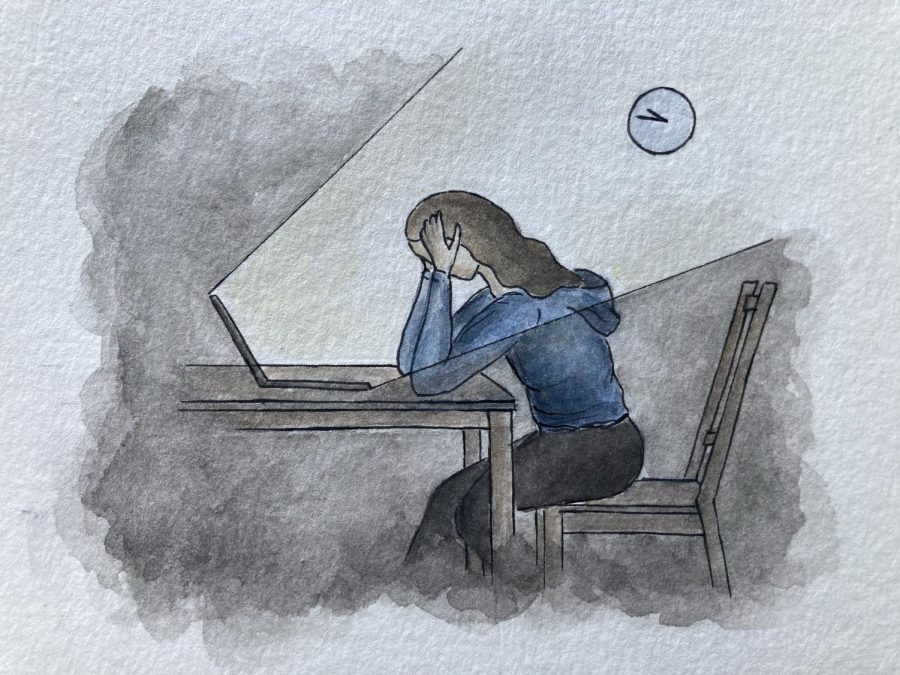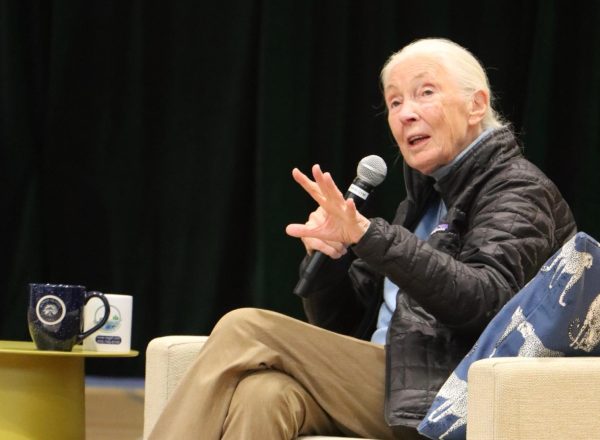Distance Learning Harms Teenagers’ Mental Health, Experts Find
School closures during the pandemic have contributed to a rise in mental health struggles among teenagers. Staff illustration: Michele Hratko.
November 5, 2020
By creating an environment conducive to increased anxiety and depression, COVID-19 school closures have had a negative impact on the mental health of many teenagers.
Clinical Psychologist Lorraine Wong, who works at the Feeling Good Institute, has seen a significant increase in the number of teenagers she has been referred, which she attributes to the mental health downsides of distance learning. “I have a lot of teenagers who are feeling more depressed [and] more detached from their peers and teachers,” Wong said. “It’s just [that] people need space; they need to go out and do their own thing sometimes.”
Aside from the feeling of social isolation, Wong believes that synchronous online classes have anxiety-inducing effects on students. “With my teenagers, what I’m really noticing is an increase in anxiety about being online for school. […] With Zoom, when you talk, you know the teacher will just show your face,” Wong said. “So a lot of kids think about how they’re going to be perceived on Zoom.”
Menlo Upper School Counselor Tracy Bianchi echoed the idea that a variety of new challenges are harming students. “All that is infiltrating into the mandatory distance learning is around coping mechanisms and resiliency or lack thereof,” Bianchi said. “There’s all these different things that create downfall or struggle with depression, anxiety or any kind of eating disorders or mental health issues in general.”
Beyond the day-to-day mental health struggles that the majority of high schoolers and young adults have experienced as a result of school shutdowns, there comes a more serious risk: suicide and self-harm. According to a June survey by the Center for Disease Control, young adults between the ages of 18 and 24, many of whom are still students, have seen a dramatic increase in suicidal thoughts and behaviors. 25.5% of all young adults responded that they have “seriously considered suicide in the 30 days before completing the survey,” and there was a 13% increase in substance use compared to before the pandemic.
A likely explanation for this increase is that teenagers require social interaction, according to adolescent psychologist Lisa Damour on her podcast Ask Lisa: The Psychology of Parenting. “Teenagers are in a developmental space where it is critically important that they have regular contact with their peers and are able to develop close and ongoing relationships with adults outside the home, such as their teachers, their coaches, their advisers,” Damour said.
Another overlooked result of families being isolated at home is the increase in child abuse that experts believe is occurring even though reported cases have decreased. “Violence against children has always been pervasive, and now things could be getting much worse,” executive director of UNICEF Henrietta Fore said in a news release in June. “Lockdowns, school closures and movement restrictions have left far too many children stuck with their abusers, without the safe space that school would normally offer.”
“There’s also a downward reporting [of child abuse] with Child Protective Services, and a lot of that is because teachers were at the forefront of seeing what could be problematic or worrisome for a child, and they’re not in the classroom to see a lot of that,” Bianchi said.
Despite the myriad of detrimental effects of online learning on students’ mental health, Bianchi adds that there is a “silver lining.” “We have some kids who were really struggling with social anxiety or depression or other things who are now like, ‘I am doing great, I am really feeling like this is my mode of operating for now. I feel safe and contained,’” Bianchi said.














